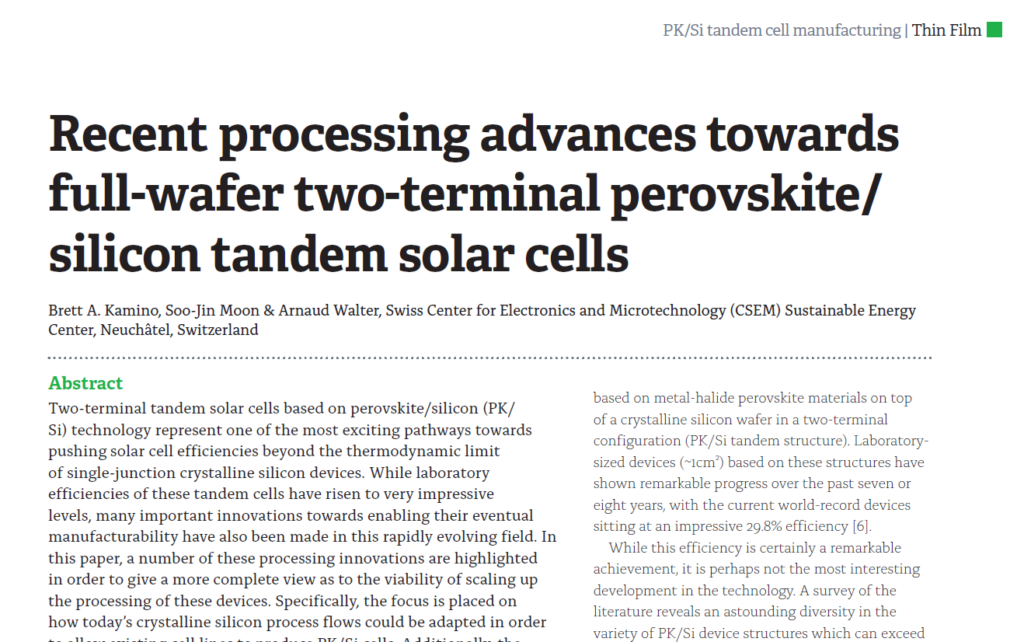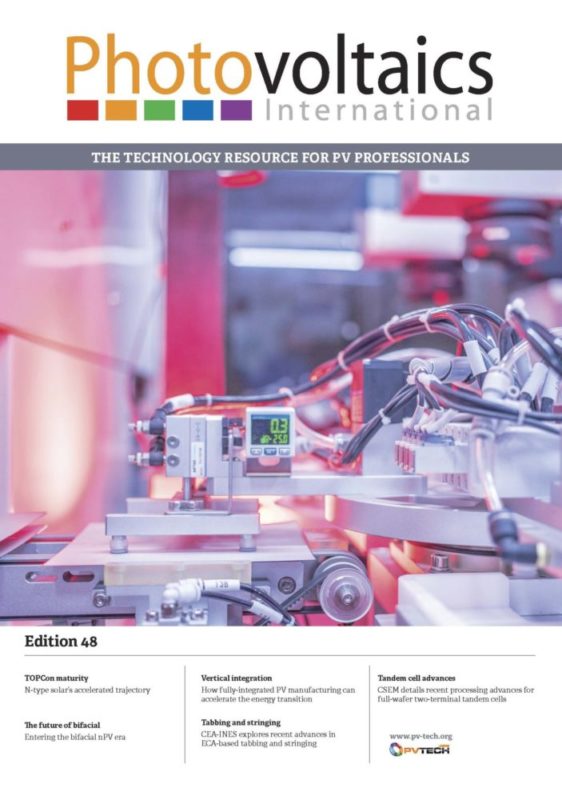Two-terminal tandem solar cells based on perovskite/silicon (PK/ Si) technology represent one of the most exciting pathways towards pushing solar cell efficiencies beyond the thermodynamic limit of single-junction crystalline silicon devices. While laboratory efficiencies of these tandem cells have risen to very impressive levels, many important innovations towards enabling their eventual manufacturability have also been made in this rapidly evolving field. In this paper, a number of these processing innovations are highlighted in order to give a more complete view as to the viability of scaling up the processing of these devices. Specifically, the focus is placed on how today’s crystalline silicon process flows could be adapted in order to allow existing cell lines to produce PK/Si cells.


